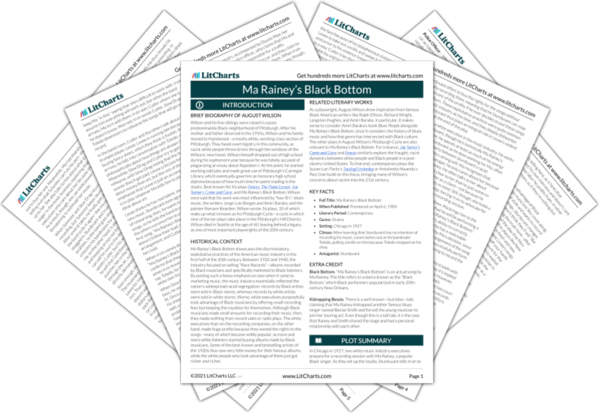Next
Summary
Ma Rainey’s Black Bottom Study Guide |
Next
Summary
|
Welcome to the LitCharts study guide on August Wilson's Ma Rainey’s Black Bottom. Created by the original team behind SparkNotes, LitCharts are the world's best literature guides.

Black Bottom. “Ma Rainey’s Black Bottom” is an actual song by Ma Rainey. The title refers to a dance known as the “Black Bottom,” which Black performers popularized in early 20th-century New Orleans.
Kidnapping Bessie. There is a well-known—but false—tale claiming that Ma Rainey kidnapped another famous blues singer named Bessie Smith and forced the young musician to join her touring act. Even though this is a tall tale, it is the case that Rainey and Smith shared the stage and had a personal relationship with each other.